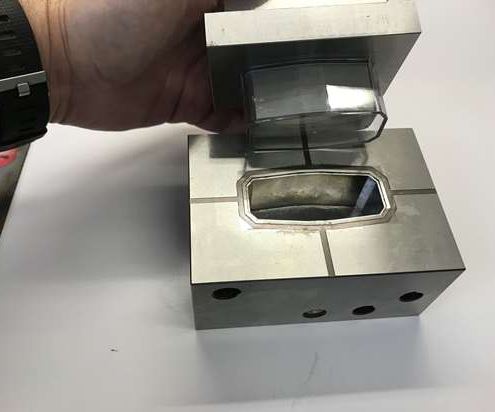Amerimold 2019 Update: What You Should Know about Getting Venting Right
This presentation will review several ways to get your venting right, including guidelines for designing and machining vents to optimize venting capacity, proper vent amount, location, width and depth, using a vacuum/blowback venting system and modifying the tool for vacuum venting, using and designing with self-venting mold material, and installing the most efficient mold components, such as vacuum vent blocks and venting valves.
Every molder experiences problems with gas and air entrapment. Venting is a process to remove trapped air and nonaqueous volatiles (NAV) from the closed mold. NAVs come from the fillers and additives that are present in the resins we use today. They give off larger volumes of gases, and when compressed, can etch the surface of the mold cores causing parts to stick. Without venting, the trapped air and NAVs will not let plastic flow to and fill the cavity, and short shots are the result. When vents are not working properly, it is because there are not enough of them or they are not at the correct depth. There are many considerations for venting, including where to vent, how wide to make them, how many to have, land width of the primary and secondary vents and of course how deep on the primary. This presentation will review several ways to get your venting right, including guidelines for designing and machining vents to optimize venting capacity, proper vent amount, location, width and depth, using a vacuum/blowback venting system and modifying the tool for vacuum venting, using and designing with self-venting mold material, and installing the most efficient mold components, such as vacuum vent blocks and venting valves.
Moderator:
- Cyndi Kustush, Senior Editor, MoldMaking Technolgy
Speakers:
- Steve Shannon, Director, Estee Lauder
- David Plocinski, General Manager, Tri-Par Mold
- Tim Lankisch, Director of Engineering, CAE Services:
Register for Amerimold to gain free access to this panel discussion and others in the Tech Talk Theater program, presented by MoldMaking Technnology.
Related Content
-
Moldmaking, the Relentless Pursuit of Innovation … Oh Yeah!
Innovation was at the root of the presentation lineup for the 2023 MoldMaking Conference, which included a heavy focus on automation, collaboration and communication, as well as mold design, talent development, reshoring and sustainability.
-
MoldMaking Technology's Leadtime Leader Awards Competition Returns!
After a brief hiatus, MoldMaking Technology’s Leadtime Leader Awards Competition is back!
-
More Than Moldmaking at PTXPO 2023
The Moldmaking Pavilion returns to the Plastics Technology Expo (PTXPO) March 28-30, 2023, at the Donald E. Stephens Convention Center in Rosemont, Illinois, but there’s more to discover than moldmaking.

















